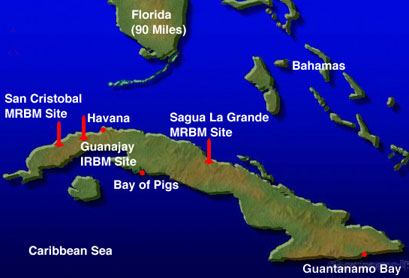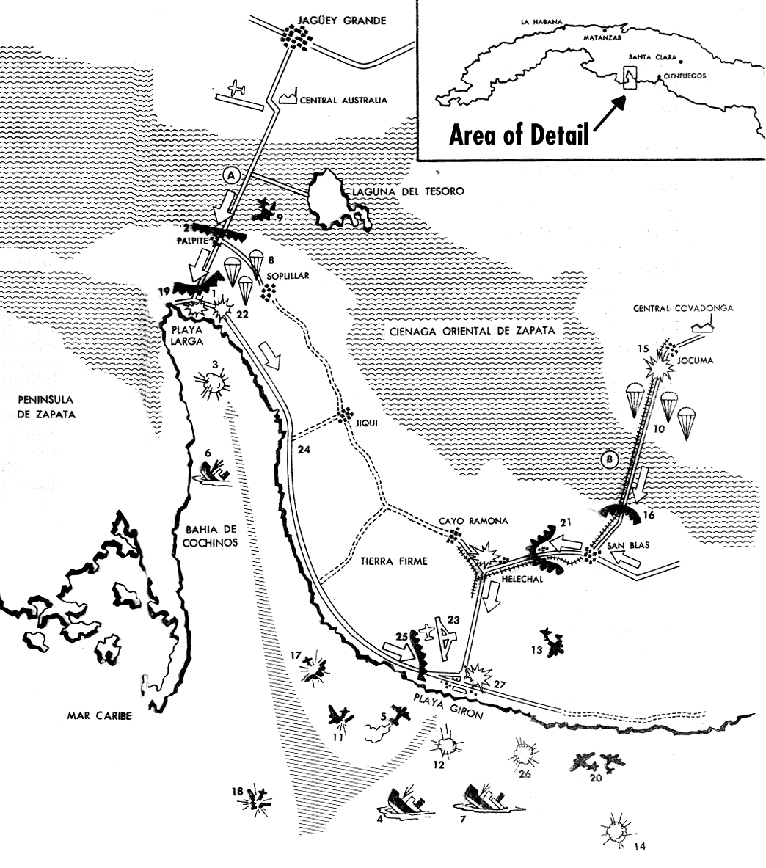

By the following winter leaders in the United States including President Eisenhower and his foreign policy advisers were convinced that action needed to be taken against Castro's government. On March 17, 1960, Eisenhower agreed to a plan developed by the Central Intelligence Agency entitled "A Program of Covert Action Against the Castro Regime." According to documents the objective was to "bring about the replacement of the Castro regime with one more devoted to the interests of the Cuban people and more acceptable to the U.S. in such a manner as to avoid the appearance of U.S. intervention."
The leadership of the CIA was confident following their successful 1954 operation to overthrow Guatemala's leftist leader, President Jacobo Arbenz. The Cuba program was modeled after the Guatemala campaign, which utilized sabotage and pyschological warfare and a small invasion force. They were convinced that these tactics could bring about Castro's overthrow by the local population. The CIA began training a force of Cuban exiles for an invasion of Cuba, and established Radio Swan, a station transmiting propoganda from Swan Island, off the coast of Honduras.
In January of 1961 new president John Kennedy inherted an operation that was nearly ready. The CIA had organized a brigade of about 1,400 exile fighters at a secluded camp in Guatemala, and was attempting to infiltrate advance men into Cuba. President Kennedy supported the plan but remained cautious. He was concerned that the size of the operation could threaten his ability to deny U.S. involvement with the exile brigade.
Some of Kennedy's advisers shared his concern. In mid-April, 1961 a plan to insure U.S. deniability was expanded so that the administration could maintain that the exiles attacking Cuba were not under the employ of the United States.
 The exile troops landed
at the Bay of Pigs in Cuba on April 17th following a limited air
strike, Fidel Castro quickly took command of the effort to defend Cuba
and repel the invaders. He mobilized military and militia units, and
called on the Cuban Air Force for support. The covert action to oust
Castro met a surprisingly speedy defeat. When the shooting ended,
114 members of the brigade were dead and 1,189 were prisoners.
The exile troops landed
at the Bay of Pigs in Cuba on April 17th following a limited air
strike, Fidel Castro quickly took command of the effort to defend Cuba
and repel the invaders. He mobilized military and militia units, and
called on the Cuban Air Force for support. The covert action to oust
Castro met a surprisingly speedy defeat. When the shooting ended,
114 members of the brigade were dead and 1,189 were prisoners.
The people of Cuba had thwarted the invaders before they were able to gain a foothold on the island. In Washington, leadership in the White House was stunned by the defeat. President Kennedy recovered quickly, however, and made a statement acknowledging U.S. complicity in the invasion.
Click on the map to enlarge
![]()
Copyright 1999 by Bill Van Norman